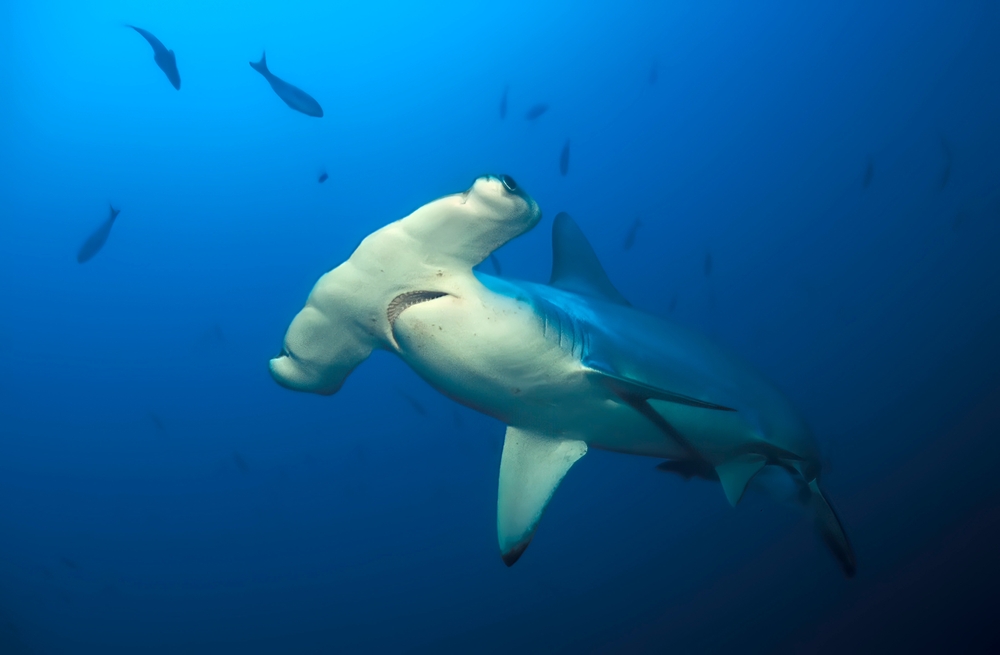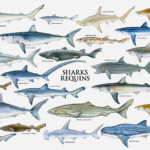Sharks are fascinating creatures that have captured the attention of scientists and the public alike for centuries.
These apex predators play a critical role in marine ecosystems, and as such, scientists have developed a specialized vocabulary to better understand, research, and communicate about these complex animals.
Whether they are investigating shark behavior, anatomy, or conservation, researchers rely on a specific set of terms to describe various aspects of sharks’ biology, ecology, and evolution.
In this article, we will explore some of the key terms and concepts scientists use when studying sharks.
1. Elasmobranchs
The term elasmobranch refers to a subclass of cartilaginous fish that includes sharks, rays, skates, and sawfish.
Derived from Greek roots—elasmo meaning “plate” and branch meaning “gill”—elasmobranchs are distinguished by their flattened gills and cartilage-based skeletons.
Scientists often use this term to describe the broader group of species to which sharks belong, highlighting their evolutionary relationship to other cartilaginous fish.
2. Apex Predator
An apex predator is an organism at the top of the food chain, with no natural predators of its own.
Many shark species, such as the great white shark (Carcharodon carcharias) and the tiger shark (Galeocerdo cuvier), are considered apex predators due to their role in regulating the populations of other marine species.
This term is crucial for understanding the ecological importance of sharks in marine ecosystems, where they help maintain the balance of marine life.
3. Cartilage
Unlike bony fish, sharks have a skeleton made of cartilage, a flexible and lighter tissue than bone.
This adaptation gives sharks increased buoyancy and flexibility, which is particularly important for fast-swimming species.
Cartilage is often studied by scientists when examining the evolutionary differences between sharks and other fish, and its impact on shark physiology and movement.
4. Ampullae of Lorenzini
The ampullae of Lorenzini are specialized sensory organs found in sharks that allow them to detect electric fields in the water.
These jelly-filled pores, located on the shark’s head, enable them to sense the movements and heartbeats of prey, even when it is hidden beneath the sand or in murky waters.
This term is crucial when studying how sharks hunt and navigate their environments, especially in low-visibility conditions.
5. Gill Slits
Sharks havegill slits instead of the gill covers that bony fish possess. These slits are located on the sides of a shark’s head and allow for the exchange of gases as water passes over the gills.
Most species have five gill slits, although some may have up to seven.
Scientists study gill slits to better understand how sharks extract oxygen from water and how variations in gill structure affect their ability to thrive in different aquatic environments.
6. Oviparous, Viviparous, and Ovoviviparous
Sharks exhibit different modes of reproduction, and these are described using the terms oviparous, viviparous, and ovoviviparous:
- Oviparous sharks lay eggs that hatch outside the mother’s body. Species like the horn shark are oviparous, and their eggs are often encased in a leathery capsule known as a “mermaid’s purse.”
- Viviparous sharks give birth to live young, with the embryos developing inside the mother’s body, receiving nutrients through a placenta-like structure. The great white shark is an example of a viviparous species.
- Ovoviviparous sharks also give birth to live young, but their embryos develop inside eggs that hatch inside the mother’s body. These sharks do not provide placental nourishment to the developing pups. The bull shark is an example of an ovoviviparous species.
Understanding these reproductive terms is important for scientists studying shark populations, as reproductive strategies can impact conservation efforts and population dynamics.
7. Shark Finning
Shark finning refers to the practice of removing a shark’s fins—often while the animal is still alive—and discarding the body.
This practice is illegal in many parts of the world due to its impact on shark populations.
Shark finning is a major conservation issue, and scientists use this term to describe the detrimental effects it has on shark species, many of which are already vulnerable or endangered.
8. Bycatch
Bycatch refers to marine species that are unintentionally caught while fishing for a target species.
Sharks, especially juvenile or non-target species, are often victims of bycatch in commercial fishing operations.
This term is crucial when discussing the conservation status of sharks and the need for sustainable fishing practices that minimize the accidental capture of non-target species.
9. Keystone Species
A keystone species is one that has a disproportionately large effect on its environment relative to its abundance.
Sharks are often considered keystone species because of their critical role in regulating the population dynamics of other marine organisms.
By controlling the numbers of mid-level predators and prey, sharks help maintain the overall health and balance of marine ecosystems.
Researchers study the role of sharks as keystone species to highlight their importance in marine food webs and to support conservation efforts.
10. Marine Protected Areas (MPAs)
Marine Protected Areas (MPAs) are regions of the ocean where human activities, such as fishing or mining, are restricted or regulated to protect marine life.
Scientists often advocate for the establishment of MPAs to safeguard shark populations, particularly in regions where sharks are threatened by overfishing, habitat destruction, or climate change.
These protected areas provide safe havens where shark populations can recover and thrive.
11. Tagging and Tracking
In order to study the movements, behaviors, and migratory patterns of sharks, scientists often use tagging and tracking methods.
This involves attaching a tag to the shark, often with a GPS or satellite transmitter, that allows researchers to monitor the shark’s location and activities over time.
These methods provide valuable data on migration routes, feeding habits, and habitat preferences, which is critical for effective conservation planning.
12. Shark Conservation Status
Sharks face numerous threats, including overfishing, habitat destruction, and climate change.
As a result, many shark species are assessed for their conservation status by organizations like the International Union for Conservation of Nature (IUCN).
The IUCN uses categories such as Critically Endangered, Endangered, Vulnerable, and Near Threatened to describe the level of risk faced by different shark species.
Scientists use these terms to assess population trends and guide conservation efforts.

Conclusion
Sharks are some of the most well-studied yet misunderstood creatures in the animal kingdom.
By using specialized terms and concepts, scientists are able to unravel the complexities of these incredible animals.
From their unique anatomy to their essential role as apex predators, the vocabulary surrounding sharks plays an integral role in advancing our understanding of their biology, behavior, and conservation needs.
As we continue to study sharks, the hope is that these terms will not only enhance scientific knowledge but also contribute to efforts aimed at protecting these vital creatures for generations to come.



